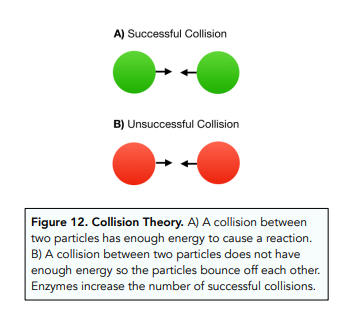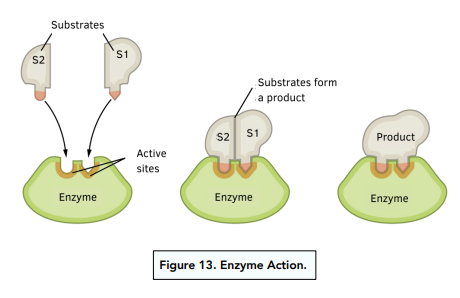Enzymes & Digestion - Enzymes: An Introduction (GCSE Biology)
Enzymes: An Introduction
Enzymes
Enzymes as Catalysts
Enzymes are biological catalysts. Biological catalysts increase the rates
of reactions, without having to increase temperature.
Catalysts are not used up, so they can keep speeding up a reaction without running out (in theory). They increase the rate of a chemical reaction but is not used up by the reaction. Enzymes are important in all living organisms as they speed up reactions within organisms in order to sustain life.
- Reactions happen due to successful collisions. When two reactants collide, they need to have enough energy for a reaction to happen. This is the activation energy.
- Enzymes reduce the activation energy (Ea) of a chemical reaction. Enzymes speed up reactions by reducing activation energy. Activation energy is the minimum amount of energy required for a collision between two particles to result in a reaction.
- Reducing the Ea of a reaction increases the rate at which the reaction occurs. In many instances, chemical reactions in the body require a higher temperature than normal body temperature. Reduction of Ea by enzymes allows for these reactions to occur at lower temperatures and at a greater rate.

Introduction
Active Sites
- All enzymes have an active site with a specific shape. The active site of an enzyme binds to a substrate (the target). This forms an enzyme substrate complex. The structure of an enzyme’s active site determines which substrates it is capable of binding to.
- Enzymes are substrate specific. Because of the unique structure of each enzyme’s active site, most enzymes can only readily bind to two substrates which “fit” into its active site.

Protein Structure of Enzymes
Enzymes are proteins, which means that they are made of many amino acids. Like most proteins, the structure of the enzyme is essential for its function. In the case of enzymes, the protein structure determines the shape of the active site – so it is very important!
We can consider protein structure in four levels:
- Primary structure – the order and number of amino acids in the chain becomes the primary structure. The primary structure is flat and 2D.
- Secondary structure – The secondary structure is how the protein folds or coils to make a 3D structure. The chain of amino acids is folded into an alpha helix or coiled into beta plated sheet. Hydrogen bonds form between amino acids.
- Tertiary structure – the tertiary structure describes the final 3D structure of the protein chain. It involves many bonds such as ionic, hydrogen and hydrophobic bonds.
- Quaternary structure – this describes how the different chains in the proteins come together.






Still got a question? Leave a comment
Leave a comment